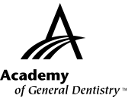|
Exercise No. 335
Subject Code: 490
Periodontics
The 15 questions for this exercise are based on the article, “Salivary thiol levels and periodontal parameters assessed with a chromogenic strip”, on pages 50-54. This exercise was developed by Daniel S. Geare, DMD, in association with the General Dentistry Self-Instruction committee.
|
Reading the article and successfully completing the exercise will make enable you to:
- identify the applications for high-powered magnification in general dentistry;
- recognize the advantages of using high-powered magnification in general dentistry; and
- understand how high-powered magnification can enhance patient treatment.
|

